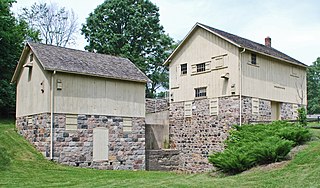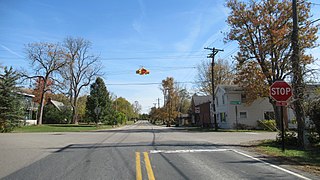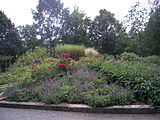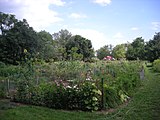
Ann Arbor is a city in and the seat of government of Washtenaw County, Michigan, United States. The 2020 census recorded its population to be 123,851, making it the fifth-most populous city in Michigan. Located on the Huron River, Ann Arbor is the principal city of its metropolitan area, which encompasses all of Washtenaw County and had 372,258 residents in 2020.

Washtenaw County is a county located in the U.S. state of Michigan. At the 2020 census, the population was 372,258. The county seat and largest city is Ann Arbor. The county was authorized by legislation in 1822 and organized as a county in 1826. Washtenaw County comprises the Ann Arbor Metropolitan Statistical Area. The county is home to the University of Michigan, Eastern Michigan University, Washtenaw Community College, and Concordia University Ann Arbor.

Dexter is a city in Washtenaw County, Michigan, in the United States. As of the 2020 United States census, the population was 4,500.

Pittsfield Charter Township is a charter township of Washtenaw County in the U.S. state of Michigan. The population was 39,147 at the 2020 census.

York Charter Township is a charter township of Washtenaw County in the U.S. state of Michigan. The population was 9,108 at the 2020 census.

The Huron River is a 130-mile-long (210 km) river in southeastern Michigan, rising out of the Huron Swamp in Springfield Township in northern Oakland County and flowing into Lake Erie, as it forms the boundary between present-day Wayne and Monroe counties. Thirteen parks, game areas, and recreation areas are associated with the river, which passes through the cities of Dexter, Ann Arbor, Ypsilanti, Belleville, Flat Rock and Rockwood that were developed along its banks.

John Hieftje is an American politician who served as the 60th mayor of Ann Arbor, Michigan. Hieftje began his political career in 1999, when he was elected to the city council for Ann Arbor's 1st Ward as a Democrat. He was first as Mayor in 2000, and was re-elected in 2002, 2004, 2006, 2008, 2010 and 2012.

The University of Michigan Matthaei Botanical Gardens includes botanical gardens, natural areas with trails, and several research-quality habitats and is part of the organization Matthaei Botanical Gardens and Nichols Arboretum. It was established in 1907.

A wet meadow is a type of wetland with soils that are saturated for part or all of the growing season which prevents the growth of trees and brush. Debate exists whether a wet meadow is a type of marsh or a completely separate type of wetland. Wet prairies and wet savannas are hydrologically similar.

Buhr Park is a 39-acre public park in Ann Arbor, Michigan.

Rancho San Antonio County Park and Rancho San Antonio Open Space Preserve are a conjoined public recreational area in the Santa Cruz Mountains, in the northwest quadrant of Santa Clara County, California. The County Park is bordered by Los Altos with some parts of the eastern part of the County Park in western Cupertino. The Open Space Preserve is on the west side of the County Park, also bordered by Los Altos Hills, Monte Bello Open Space Preserve, and the Permanente Quarry.

Pinckney State Recreation Area is a Michigan state recreation area in Dexter, Sylvan and Lyndon Townships, Washtenaw County and Putnam and Unadilla Townships, Livingston County in the U.S. state of Michigan. The park is 11,000 acres (4,500 ha) and sits at an elevation of 922 feet (281 m). The park is connected to the nearby Waterloo State Recreation Area by the 35-mile (56 km) Waterloo–Pinckney Trail. Pinckney State Recreation Area is open for year-round recreation including hiking, fishing, swimming, hunting and a variety of winter sports.

The Ann Arbor District Library (AADL) is a public library system that serves the residents of the Ann Arbor, Michigan school district. The Downtown Library, located at 343 South Fifth Avenue, was dedicated in 1957 and had building additions in 1974 and 1991. AADL also includes four branch libraries: Malletts Creek, Traverwood, Pittsfield, and Westgate. At the beginning of the fiscal year of 2021–2022, the library reopened for full service after a year of vestibule service during the COVID-19 pandemic. 8,403 new library cards were issued during the fiscal year, and AADL saw a total door count of 909,101. The library's system holds over 480,000 materials - including books, DVDs and Blu-rays, CDs, audiobooks, tools, art prints, language materials, and more. These materials saw almost 5 million checkouts in the 2021-2022 fiscal year. The library also offers access to databases and Libby, an online source of ebooks and audiobooks. While these numbers don't fully compare to pre-COVID-19 numbers, they're approaching an equilibrium.

Marra Farm, a 4-acre (1.6 ha) plot of land in Marra-Desimone Park, South Park, Seattle, Washington is one of only two historic agricultural parcels inside Seattle city limits that retains an agricultural use today; the other is Picardo Farm.

The Border-to-Border (B2B) Trail is a partially constructed non-motorized trail system in Washtenaw County, Michigan. The system is planned to cover approximately 55 miles (89 km) across Washtenaw County, along the Huron River.

There are a wide range of recreational areas and facilities in Colorado Springs, Colorado.

The Parker Mill, also known as Parker Mill County Park or Parker Mill Complex, is a historic mill and park in Ann Arbor Charter Township, Michigan. The mill is a well-preserved example of a small-scale grist mill operation that was once common in Michigan. The mill and nearby Parker House were listed on the National Register of Historic Places in 1982.

Malletts Creek is a stream in Washtenaw County, Michigan. A tributary to the Huron River, much of Malletts Creek's watershed lies within urban or suburban areas. Approximately 40% of the land within the creek's watershed is topped with impermeable surfaces. As a result, the stream exists in an extremely impaired state, and testing sites on the stream monitored through the "Adopt-A-Stream" program continuously indicate the streams poor quality.

The Ward-Meade House is a historic house in Topeka, Kansas. It was built in 1870 for Anthony A. Ward and his wife, née Mary Jane Foster. It was inherited by their daughter Jennie, who lived here with her husband John Meade, an engineer for the Atchison, Topeka and Santa Fe Railway. It remained in the Ward-Meade family until 1961, when it was acquired by the city of Topeka.

Mooreville is an unincorporated community in Washtenaw County in the U.S. state of Michigan. The community is located within York Township. As an unincorporated community, Mooreville has no legally defined boundaries or population statistics of its own.






























